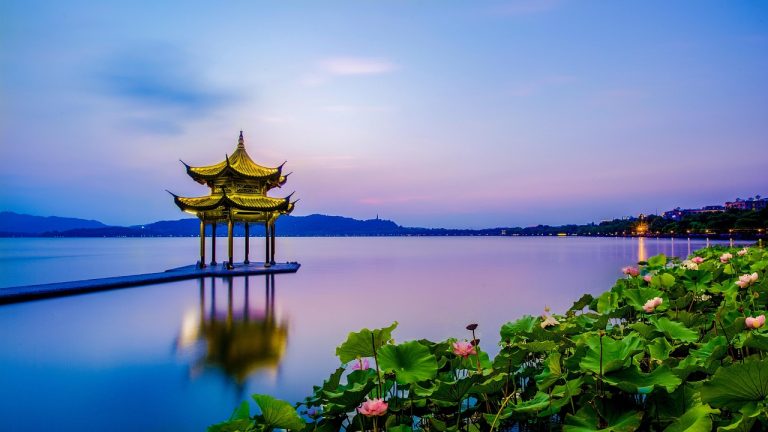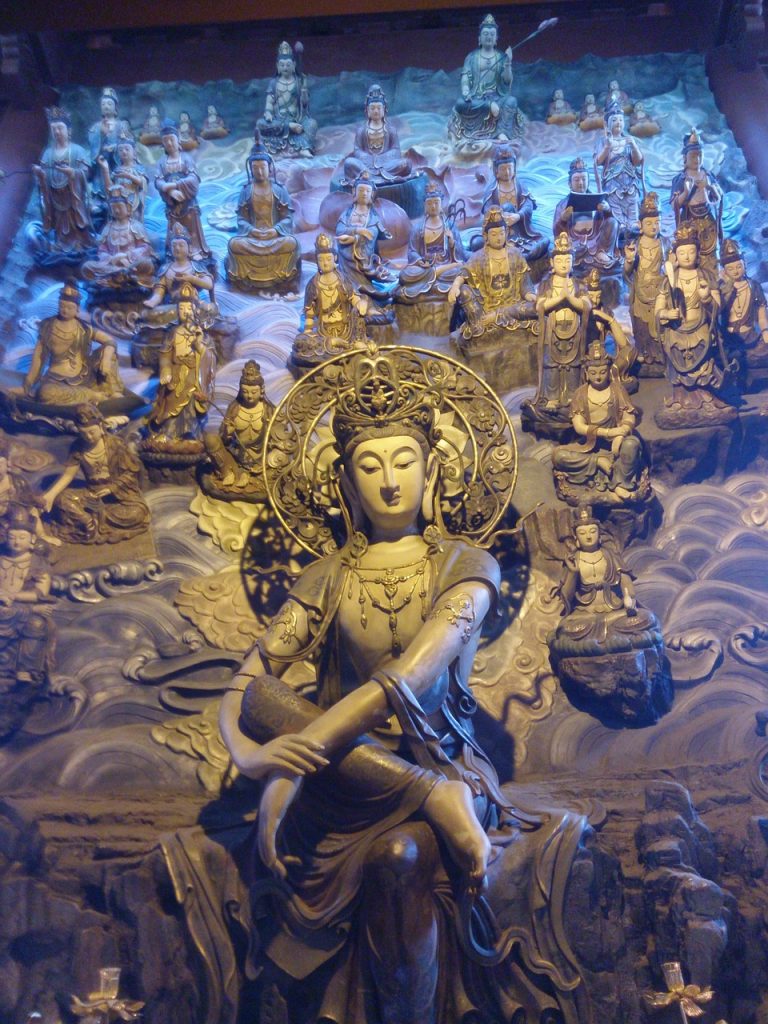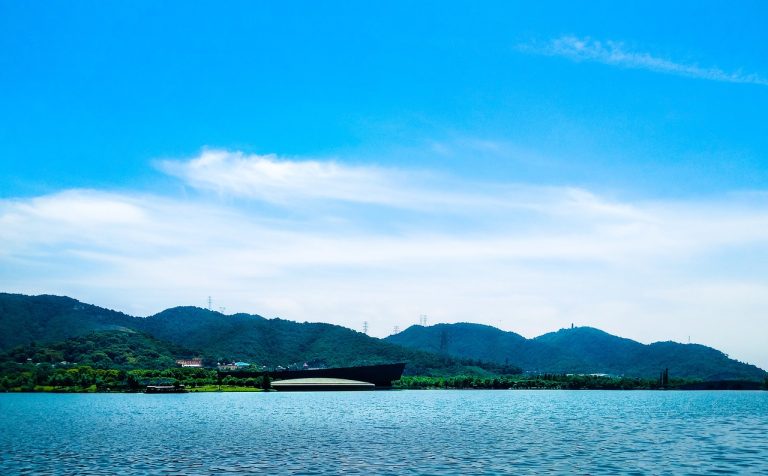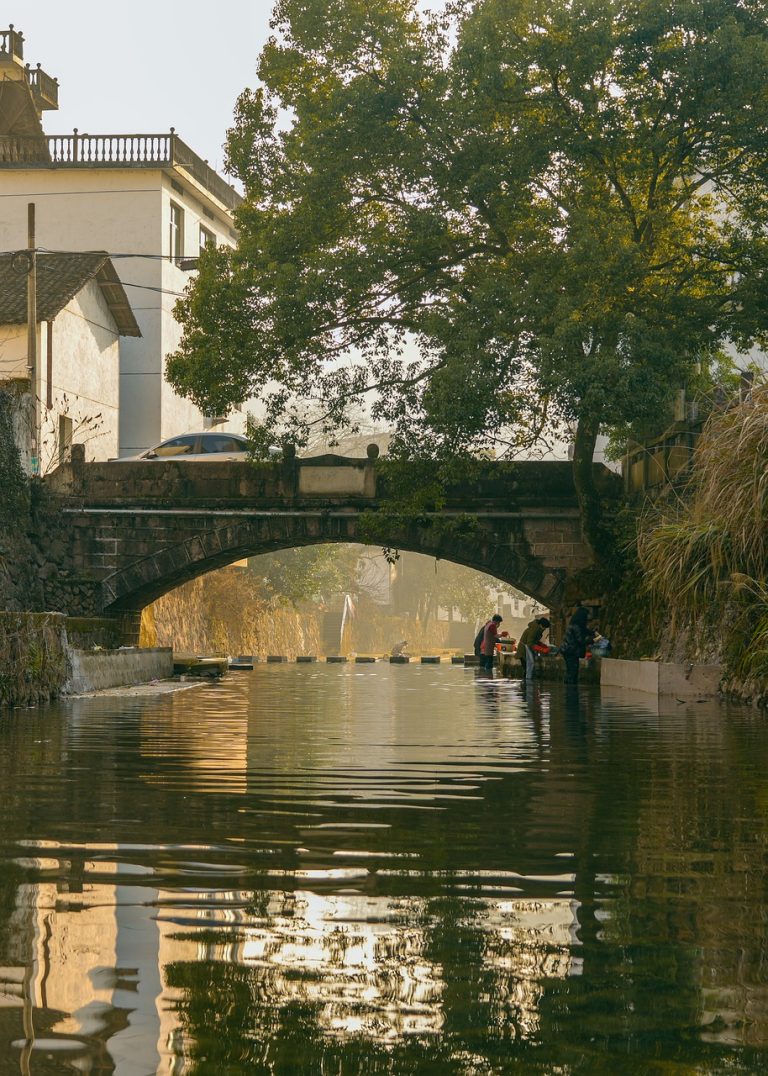Listen (English voice)
Hangzhou China Video
Local Myths and Legends of Hangzhou China
Hangzhou, the capital city of Zhejiang Province in China, is not only renowned for its natural beauty and historical sites but also for its rich collection of local myths and legends. These stories have been passed down through generations, adding an air of mystery and enchantment to the city’s cultural heritage. In this article, we will explore some of the most fascinating myths and legends that are deeply intertwined with the history and folklore of Hangzhou.
The Legend of West Lake
- The Broken Bridge: According to legend, a beautiful lady named Bai Suzhen fell in love with a young scholar named Xu Xian. They got married and lived happily near the Broken Bridge on West Lake. However, their love story was disrupted by a Buddhist monk, Fahai, who believed that Bai Suzhen was a snake spirit. The tale of their tragic love and Fahai’s attempt to separate them is a popular legend in Hangzhou.
- Leifeng Pagoda: Another famous legend associated with West Lake revolves around the Leifeng Pagoda. It is said that a white snake transformed into a beautiful lady and lived in the pagoda for centuries. The pagoda eventually collapsed due to the power of the snake spirit, revealing the truth behind the legend.
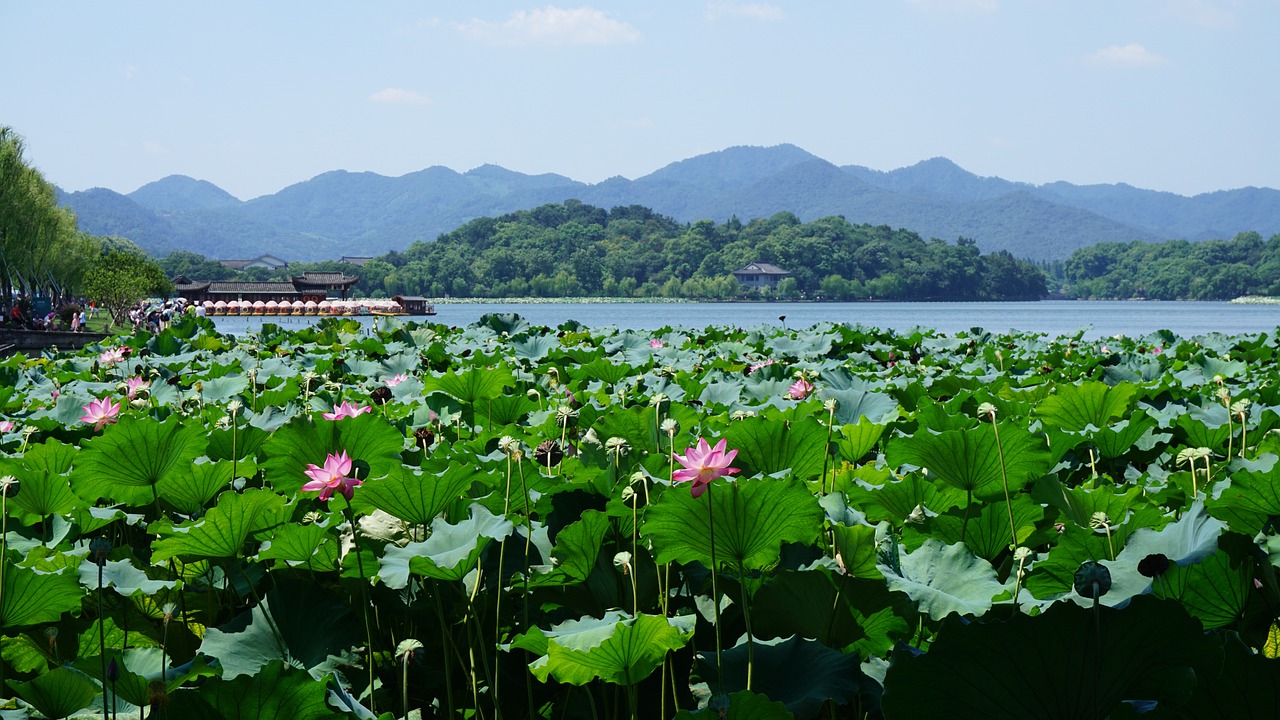
The Legend of Lingyin Temple
- Iron Arhat: Lingyin Temple, one of the oldest and most significant Buddhist temples in Hangzhou, is associated with the legend of the Iron Arhat. It is believed that the statue of the Arhat has magical powers and can protect the temple from harm. The legend tells the story of how the statue was brought to Lingyin Temple and the miracles it performed.
- Lingyin Fei Lai Feng: Another fascinating legend related to Lingyin Temple is the tale of the Fei Lai Feng, or “Peak Flown From Afar.” According to the legend, the peak was magically transported from India to Hangzhou by an Indian monk. The unique rock formations on the peak are said to resemble various Buddhist deities.
The Legend of Grand Canal
- The Weaving Maid and the Cowherd: The Grand Canal, a UNESCO World Heritage Site, has its own legendary tale. The story of the Weaving Maid and the Cowherd is a Chinese folktale that takes place along the banks of the canal. The tale tells of two star-crossed lovers who can only meet once a year on the seventh day of the seventh lunar month.
- Dragon Boat Racing: Dragon boat racing is a popular tradition along the Grand Canal in Hangzhou. Legend has it that the dragon boat races originated from the belief that the dragon, a symbol of power and good fortune, would bring blessings to the people and protect them from evil spirits.
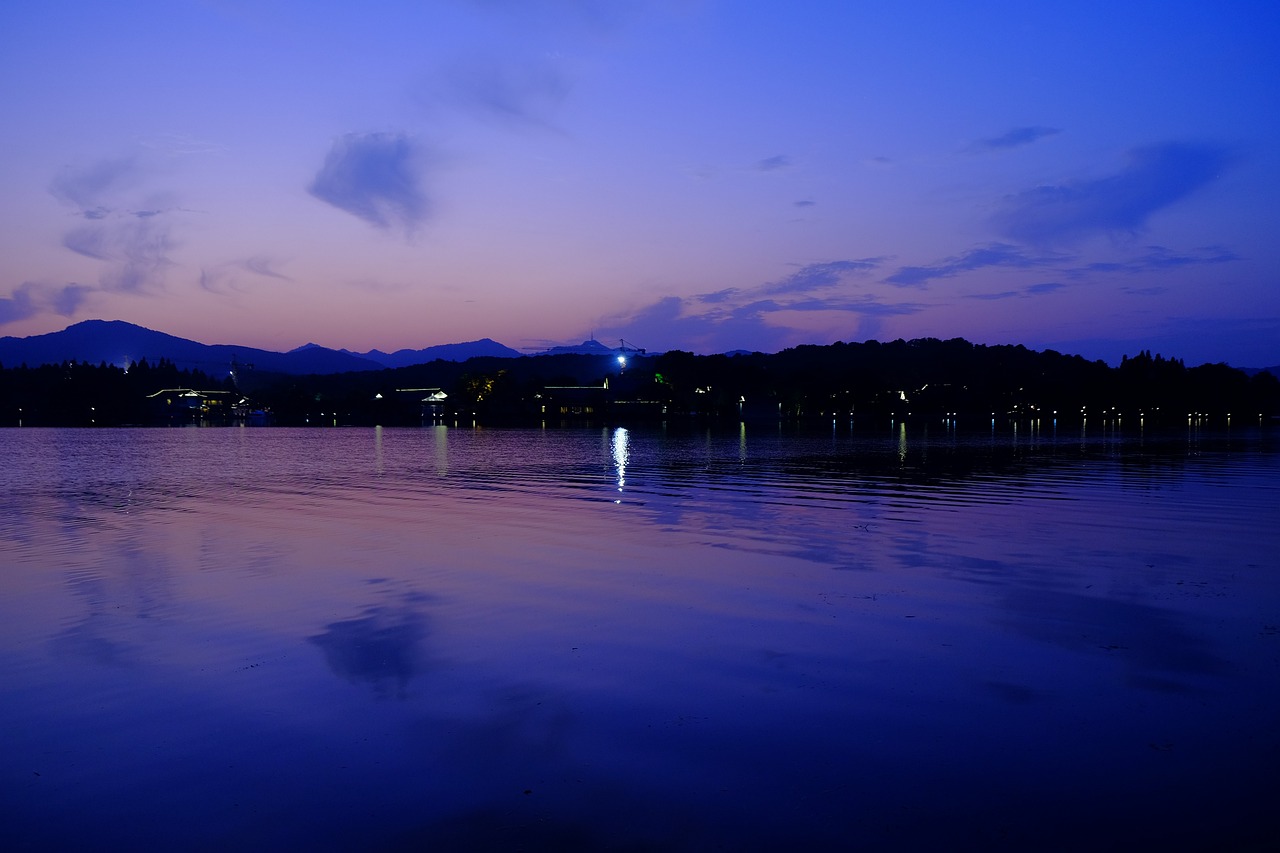
The Legend of Qiantang River
- The Tide-Bore: Qiantang River is famous for its tidal bore, known as the “Silver Dragon.” The legend surrounding the tidal bore tells of a brave fisherman who rode the wave on a bamboo raft to rescue his wife from a dragon. The story symbolizes the indomitable spirit of the people of Hangzhou.
- The Moon over the Tide: Another legend associated with Qiantang River is the tale of the Moon over the Tide. It is said that on the night of the Mid-Autumn Festival, the moon appears exceptionally large and bright over the river, creating a breathtaking sight that has captivated people for centuries.
The Legend of Longjing Tea
- The Dragon Well: Longjing Tea, also known as Dragon Well Tea, has a legend linked to its origin. It is said that a dragon once resided in a well near the West Lake, and the tea leaves grown around the well were imbued with the dragon’s mystical powers. The legend adds to the allure of Longjing Tea, which is highly regarded for its delicate flavor and health benefits.
- The Emperor’s Favorite: Longjing Tea has long been favored by Chinese emperors. According to legend, Emperor Qianlong of the Qing Dynasty was so enamored with the tea that he visited Hangzhou and personally picked tea leaves from the Dragon Well. His endorsement elevated the status of Longjing Tea to new heights.

The Legend of Hefang Street
- Street of Arts and Crafts: Hefang Street, a bustling pedestrian street in Hangzhou, is known for its traditional arts and crafts. According to legend, the street was once a gathering place for talented artisans and craftsmen who showcased their skills and traded their exquisite creations. The street continues to be a vibrant hub of cultural heritage and creativity.
- Wulin Night Market: Hefang Street is also famous for its Wulin Night Market, where visitors can indulge in a variety of local delicacies and street food. The market comes alive in the evening, offering a sensory feast of flavors and aromas that attract both locals and tourists alike.
The Legend of Su Causeway
- The Red Carp: Su Causeway, a scenic pathway on West Lake, is associated with the legend of the Red Carp. According to the tale, a scholar named Su Dongpo released red carp into the lake to commemorate his friend. It is believed that the carp transformed into beautiful dragons and still reside in the lake, bringing good luck to those who encounter them.
- Autumn Moon on the Calm Lake: Su Causeway is also renowned for its picturesque views during the Mid-Autumn Festival. The legend of the Autumn Moon on the Calm Lake tells of a romantic encounter between two lovers under the moonlight, symbolizing love and reunion.
The Legend of Hangzhou Cuisine
- Dongpo Pork: Hangzhou Cuisine, also known as Zhejiang Cuisine, is famous for its delicate flavors and meticulous preparation. One of its signature dishes is Dongpo Pork, named after the poet and scholar Su Dongpo. The legend goes that Su Dongpo accidentally invented the dish while experimenting with cooking techniques, resulting in the creation of this succulent and flavorful dish.
- West Lake Fish in Sweet Sour Sauce: Another renowned dish from Hangzhou Cuisine is West Lake Fish in Sweet Sour Sauce. Legend has it that the dish was created during the Qing Dynasty by a chef who sought to recreate the beautiful scenery of West Lake through the combination of flavors and textures.
The Legend of Broken Bridge
- Love and Separation: The Broken Bridge is not only a prominent landmark in Hangzhou but also the setting for a tragic love story. Legend has it that two lovers, Xu Xian and Bai Suzhen, were separated by the bridge due to the interference of a Buddhist monk. The tale of their enduring love and the obstacles they faced has become a symbol of eternal love in Chinese culture.
- Bridge of Reunion: The Broken Bridge is also known as the Bridge of Reunion, as it is believed that lovers who cross the bridge together and make a wish will be reunited in the future, overcoming any obstacles that stand in their way.
The Legend of Wushan Square
- Historical Significance: Wushan Square, located in the heart of Hangzhou, has a rich historical significance. It is said that during the Southern Song Dynasty, Emperor Gaozong and Empress Xiaosu held court in the square, making it a center of political and cultural activities.
- Folklore and Festivals: Wushan Square is also known for its vibrant folklore and festivals. The square comes alive during traditional Chinese festivals, such as the Lantern Festival and the Dragon Boat Festival, with colorful celebrations and performances that showcase the city’s cultural heritage.
Hangzhou, with its captivating myths and legends, offers a glimpse into the rich tapestry of Chinese culture and history. These stories have been preserved and cherished for centuries, adding a touch of magic to the city’s allure.
References:
- chinahighlights.com
- travelchinaguide.com
- westlaketravel.com
- thechinaguide.com
- trip.com


